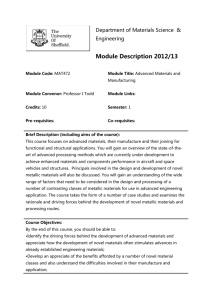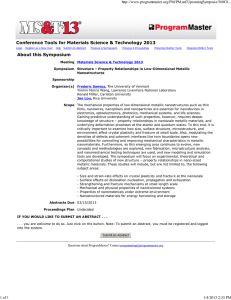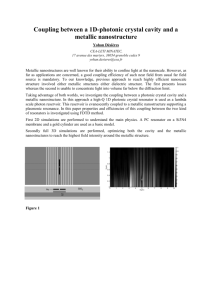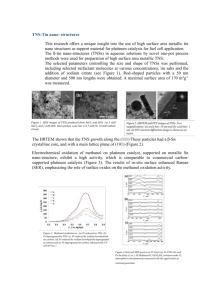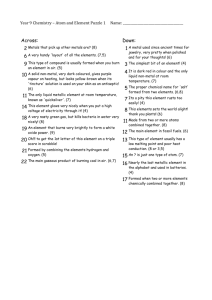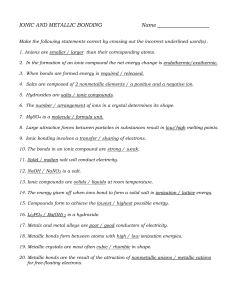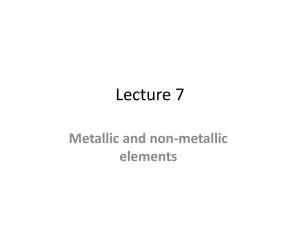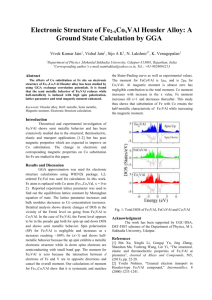An Electromagnetic Imaging System for Metallic Object Detection
advertisement
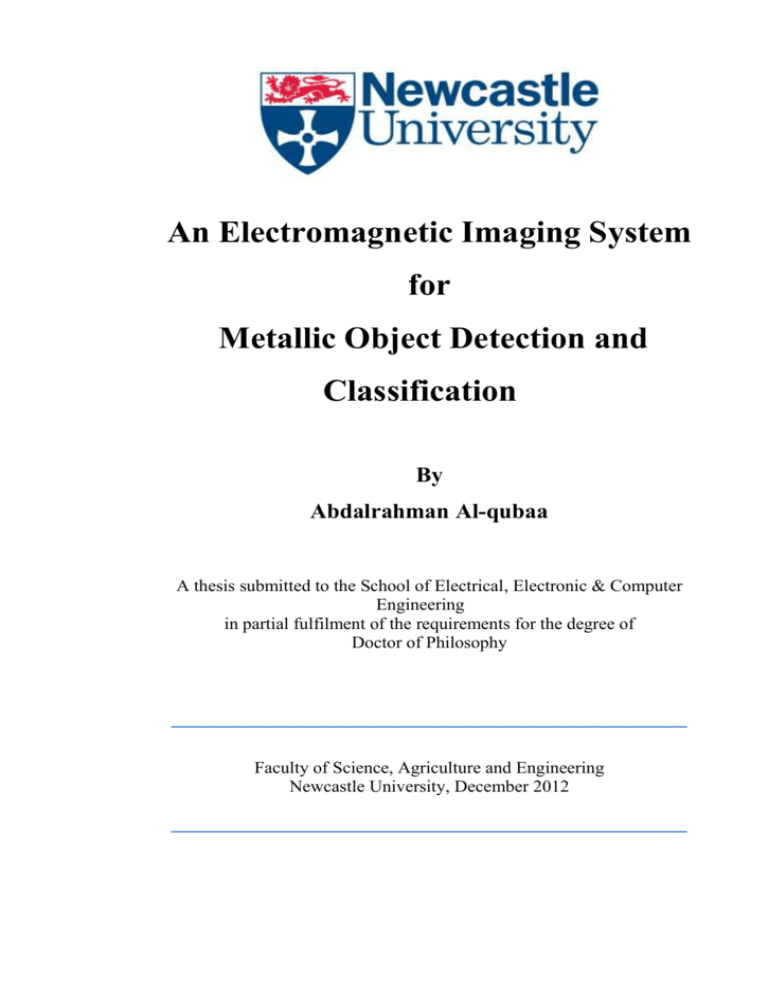
An Electromagnetic Imaging System for Metallic Object Detection and Classification By Abdalrahman Al-qubaa A thesis submitted to the School of Electrical, Electronic & Computer Engineering in partial fulfilment of the requirements for the degree of Doctor of Philosophy ________________________________________ Faculty of Science, Agriculture and Engineering Newcastle University, December 2012 ________________________________________ Abstract Electromagnetic imaging currently plays a vital role in various disciplines, from engineering to medical applications and is based upon the characteristics of electromagnetic fields and their interaction with the properties of materials. The detection and characterisation of metallic objects which pose a threat to safety is of great interest in relation to public and homeland security worldwide. Inspections are conducted under the prerequisite that is divested of all metallic objects. These inspection conditions are problematic in terms of the disruption of the movement of people and produce a soft target for terrorist attack. Thus, there is a need for a new generation of detection systems and information technologies which can provide an enhanced characterisation and discrimination capabilities. This thesis proposes an automatic metallic object detection and classification system. Two related topics have been addressed: to design and implement a new metallic object detection system; and to develop an appropriate signal processing algorithm to classify the targeted signatures. The new detection system uses an array of sensors in conjunction with pulsed excitation. The contributions of this research can be summarised as follows: (1) investigating the possibility of using magneto-resistance sensors for metallic object detection; (2) evaluating the proposed system by generating a database consisting of 12 real handguns with more than 20 objects used in daily life; (3) extracted features from the system outcomes using four feature categories referring to the objects’ shape, material composition, time-frequency signal analysis and transient pulse response; and (4) applying two classification methods to classify the objects into threats and non-threats, giving a successful classification rate of more than 92% using the feature combination and classification framework of the new system. The study concludes that novel magnetic field imaging system and their signal outputs can be used to detect, identify and classify metallic objects. In comparison with conventional induction-based walk-through metal detectors, the magneto-resistance sensor array-based system shows great potential for object identification and discrimination. This novel system design and signal processing achievement may be able to produce significant improvements in automatic threat object detection and classification applications. i
